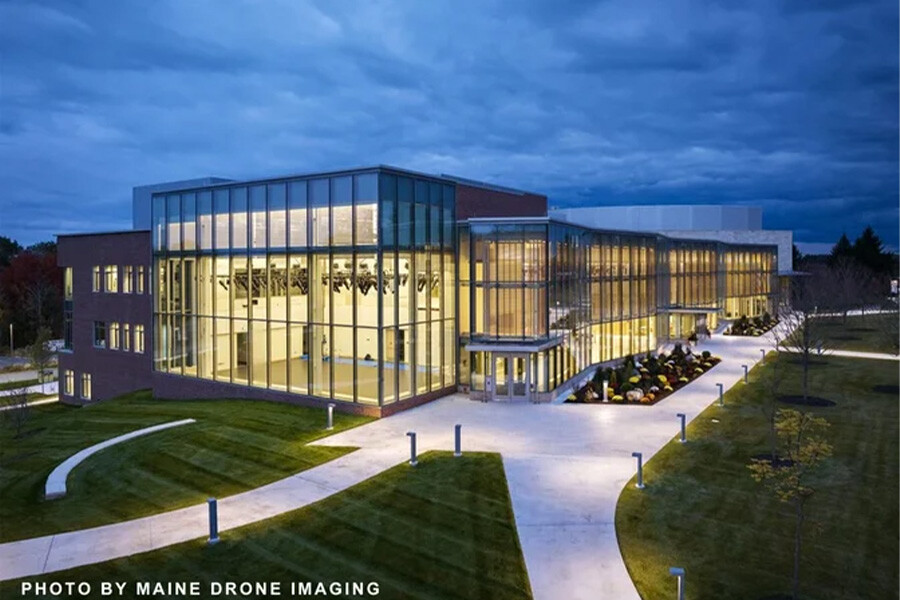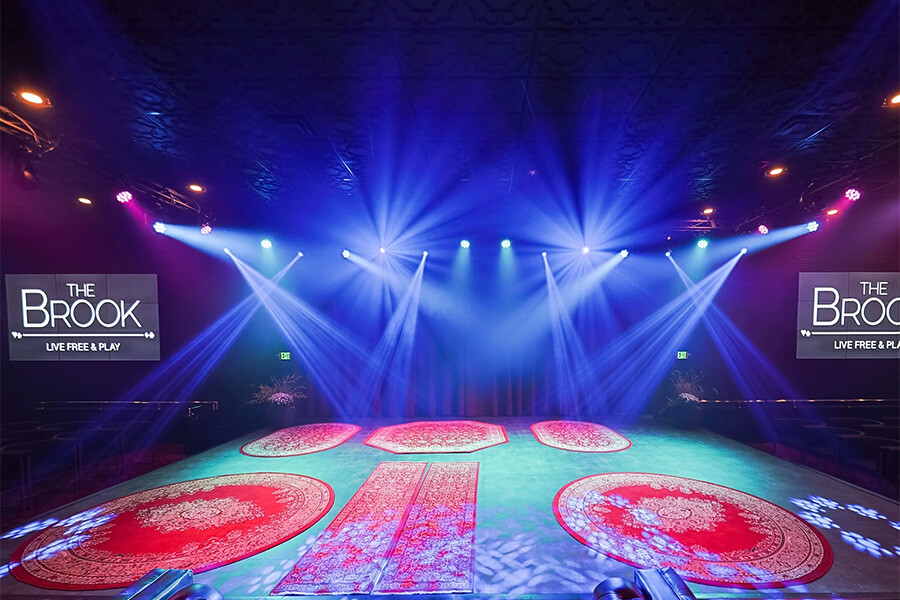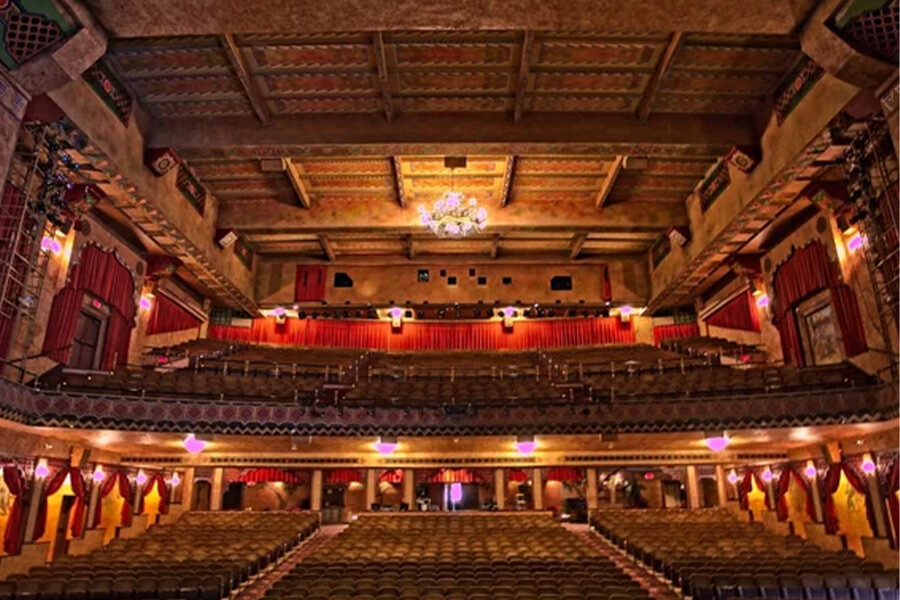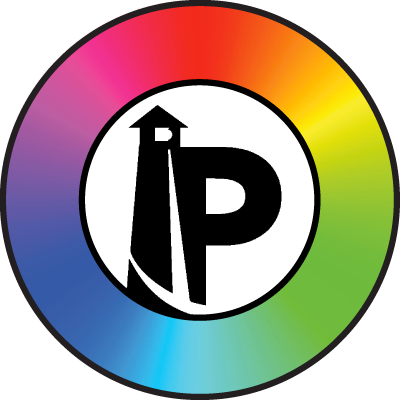Theatrical Lighting & Rigging Solutions
Theatrical lighting & stage lighting design is an art form we’re proud to say we’ve mastered. Whether we're tasked with just theatrical lighting design & specification, theatrical lighting installation, or theatrical rigging for your high school auditorium, college theater, public performing arts center, or church stage, we love partnering with you through the collaborative design-build process to ensure you choose the ideal equipment for your unique facility.
Our Theatrical Lighting Solutions Include:
Theatrical lighting design and rigging solutions is an art form we’re proud to say we’ve mastered. Whether we're tasked with just theatrical lighting design & specification, theatrical lighting installation, or theatrical rigging for your high school auditorium, college theater, public performing arts center, or church stage, we love partnering with you through the collaborative design-build process to ensure you choose the ideal equipment for your unique facility.
At PORT, we get it right the first time. Every time. That’s because our designers are also installers. Our team boasts the technical know-how and years of experience to advise specific, lasting elements and create show-stopping, fully customized, theatrical lighting systems with automated show controls, dimming systems, and stage curtains your crew can easily operate.
We install it all—everything down to movable and dead-hung pipe grids and theatrical rigging—and we’re beyond meticulous at every step, following any external design specifications to the letter. From smaller theaters to stadiums, our passion is making your performances shine.

Theatrical Lighting Installation at Gordon Center

Remodeling The Brook Casino

The Garde Arts Center Lighting Installation
Interested in working with us?
We can't wait to hear from you.
What Goes Into Theatrical Lighting Design and Specification?
Theater lighting design is the art and science of creating and controlling lighting in a theatrical production or performance to enhance the visual and emotional aspects of a production. A company creating a theatrical lighting design & specification will collaborate closely with the technical and creative teams of a venue to understand and devise a lighting plan/design specification that empowers the space to achieve its intended function.
Elements included in the design process are:
- Selection/placement of lighting fixtures
- Selection of control
- Lighting Plot
- Design specification to include a rigging system
What Is The Process of Theatrical Lighting Design and Specification?
The process of theatrical lighting design commences with a requirement for collaboration between the design company and the client. In this collaborative phase, it is crucial to gain insights into the venue’s needs and the kinds of productions that take place within the space. For existing venues, a site visit is typically conducted to assess potential locations for lighting fixtures, understand the venue’s unique features, obtain measurements, and identify any obstacles that might pose challenges.
In the case of new construction, an initial step involves reviewing building specifications to initiate the design and specification process. After establishing a thorough understanding of the venue, the next step is to craft a lighting plot. The lighting plot outlines the fixture types, their placements, and how they will be wired.
During the development of this lighting plot, careful consideration is given to the fixture selection to ensure that the appropriate fixtures are placed in the correct positions, aligning with the design objectives. Following the creation of the lighting plot, the design process advances to the generation of a design specification. This specification includes approved equipment, encompassing lighting fixtures, and rigging apparatus. It is a detailed document featuring precise placement of lighting, rigging, control equipment, a control channel diagram, and an electrical diagram.
Following the delivery of a design specification and lighting plot to the client, the design company takes on the responsibility of overseeing the installation’s quality throughout the entire project. Upon project completion, they assess whether the installation meets the specified standards. If they find it to comply, they will provide their approval.
What Goes Into Theatrical Lighting Installation?
A permanent theatrical lighting and stage lighting installation refers to the setup of lighting systems in a theater or performance venue that are intended to stay in place for an extended period. These permanent installations are designed to provide consistent, reliable, and flexible lighting solutions for a wide range of performances.
A theatrical lighting installation company serves as an important partner in a theatrical production by offering expertise in lighting design, equipment supply, installation, programming, commissioning, maintenance, and technical support.
-
Lighting System Installation
What Is The Process of Theatrical Lighting Installation?
The theatrical lighting installation process begins with the need for a lighting plot and/or design specification. These documents are imperative to a successful lighting installation as they will provide a roadmap to an installation company on how to correctly complete the project. Once documentation on the design has been received, most installation companies will conduct a site visit to the location of the installation. This site visit is meant to learn about the site, verify measurements, locate the power, and make any recommendations as needed. After receiving a design specification or lighting plot, the procurement process will begin to acquire all the necessary equipment and lighting fixtures as specified in the documentation.
Once all equipment and fixtures have been obtained, the installation company will thoroughly verify that the received items match the order and adhere to specifications. Following the verification and approval of all procured equipment, the next step is to arrange a suitable time for the installation to take place. Once a schedule has been established, the lighting installation company will mobilize to the site and execute the installation in accordance with the provided lighting plot and/or design specification.
Once all the equipment and fixtures have been installed, the next step involves adjusting and testing the lighting fixtures to confirm their proper operation. Additionally, the installation and integration of a lighting control system are necessary to ensure precise control over all fixtures within the area. After the installation is complete, there may be a post-installation phase that involves providing training to theater staff, lighting technicians, and any key personnel to ensure their proficiency in operating and maintaining the system.
Once the training is finished, it is a good idea to discuss the implementation of a suitable ongoing maintenance plan to ensure the system continues to run smoothly and safely. This plan may encompass regular or preventative safety inspections to promptly address any maintenance requirements.
What Goes Into Rigging and Stage Curtain Installation?
The concept of rigging in theatrical installations revolves around establishing suspension points for lighting, scenery, audio, curtains, and any elements essential to a theatrical or stage production requiring overhead placement.
A theatrical rigging installer must be a skilled professional who comprehends and addresses their client’s requirements, while also ensuring the safe and code-compliant hanging and rigging of all elements in a performance setting.
Elements included in the installation process include:
-
Engaging In Client Communication To Understand Their Requirements
-
Rigging Design
-
Rigging Plan
-
Rigging Installation
What Is The Process of Rigging and Stage Curtain Installation?
The rigging installation process commences with a customer inquiry to a rigging installation company. Usually, the rigging
company will pose a series of questions to grasp the project and customer requirements. Subsequently, a questionnaire is commonly employed to pinpoint aspects of the facility and project.
For intricate projects or comprehensive redesigns, many companies may necessitate an on-site visit to gain a deeper understanding of the design requirements and venue.
After completing the design phase, the necessary equipment for the installation will be obtained. Once all the required equipment is secured, the rigging installation will proceed according to a mutually agreed-upon timeline between the contractor and client.



.webp?width=2024&height=1518&name=brewer-theater%20(2).webp)


.webp?width=2024&height=1518&name=0006_8897_Teuten%20(1).webp)
.webp?width=2500&height=1667&name=PEA+Goel+Center+DRAMAT+Side-1%20(1).webp)
